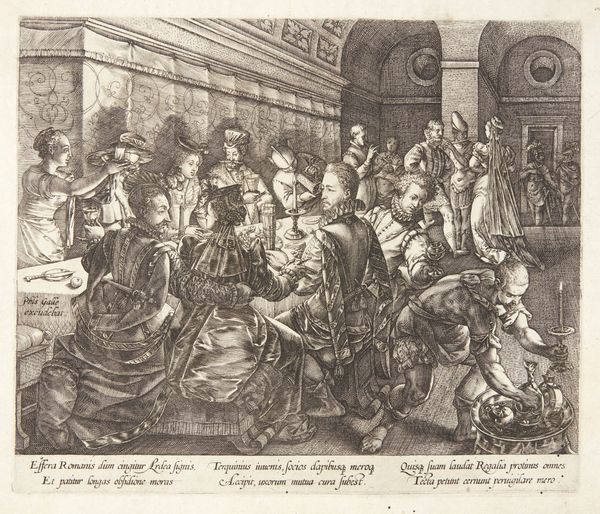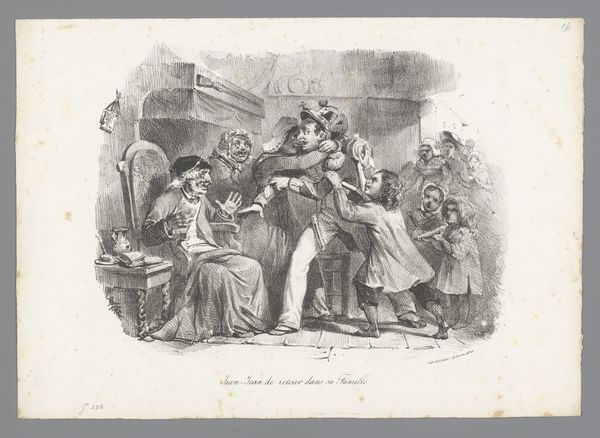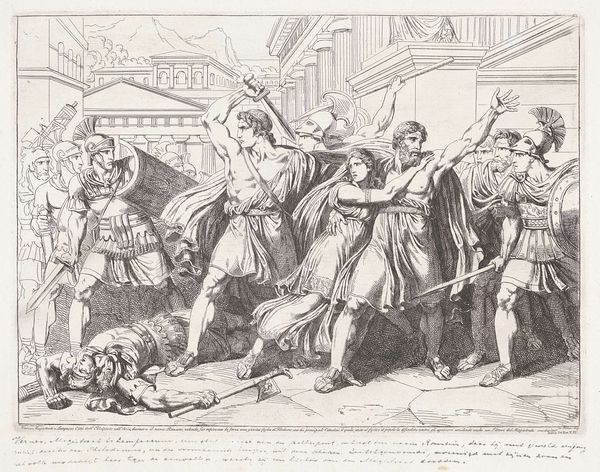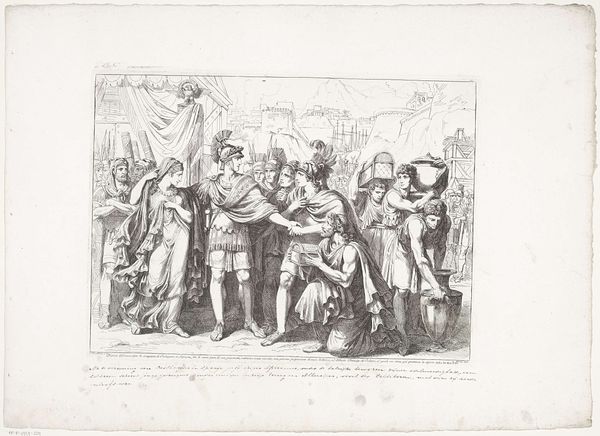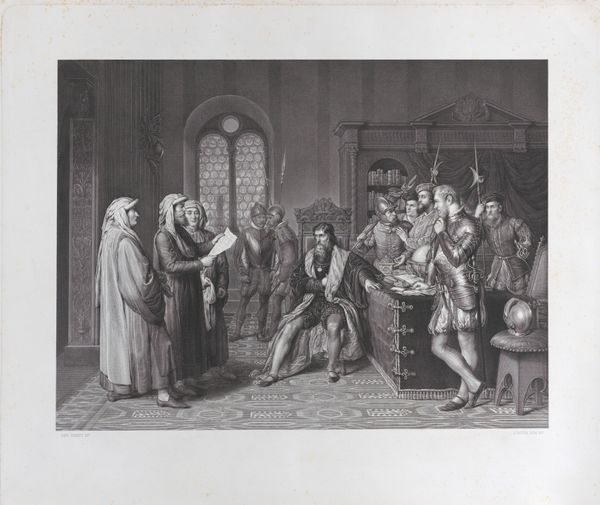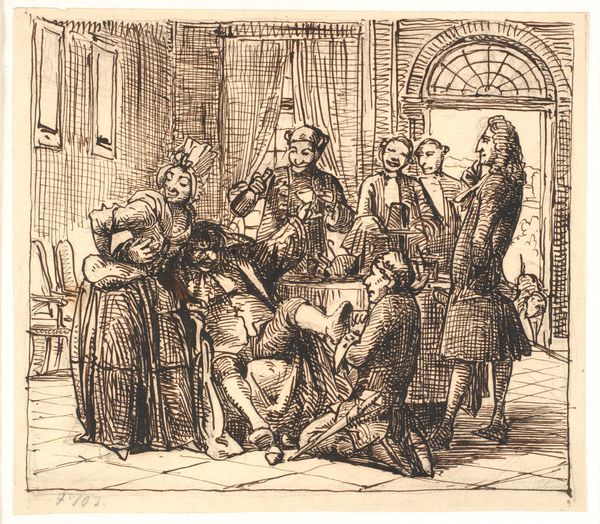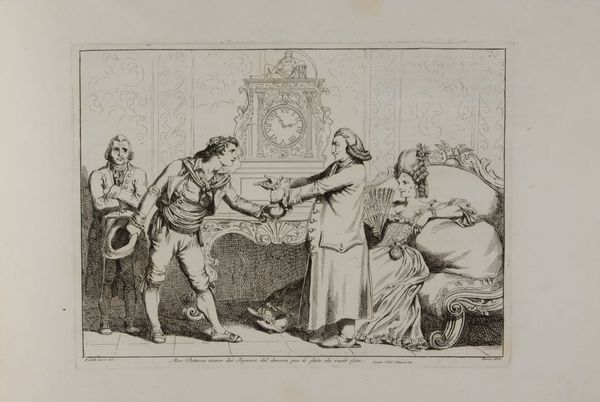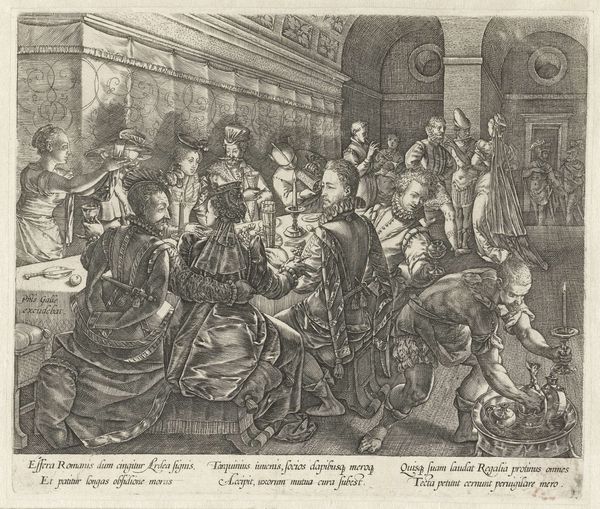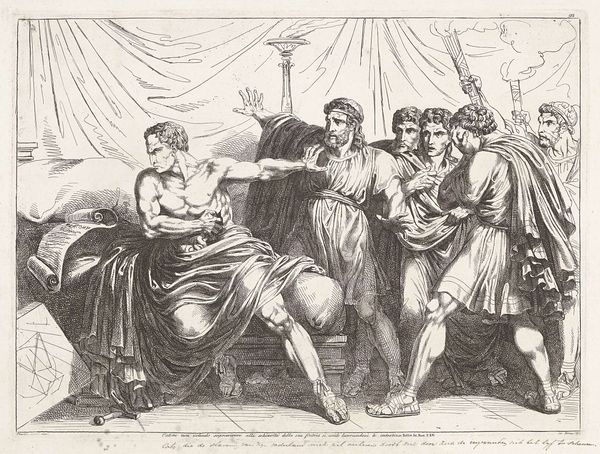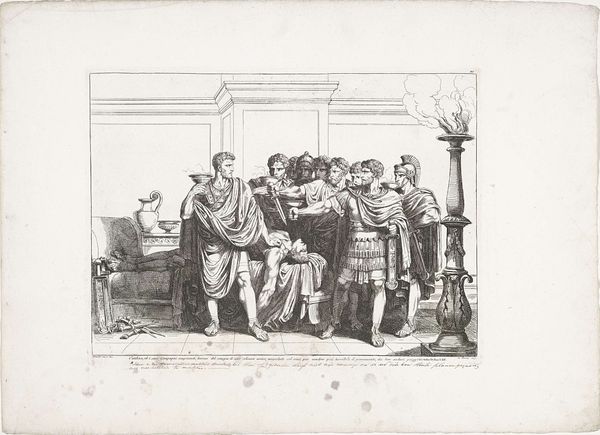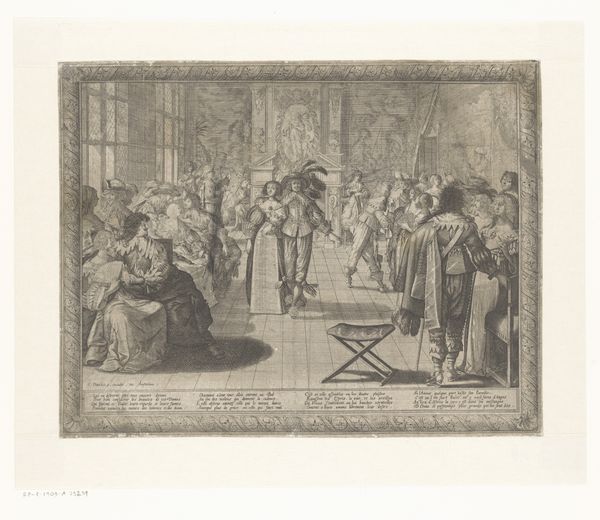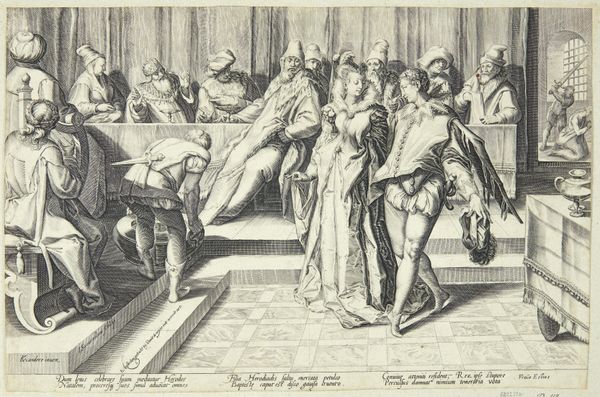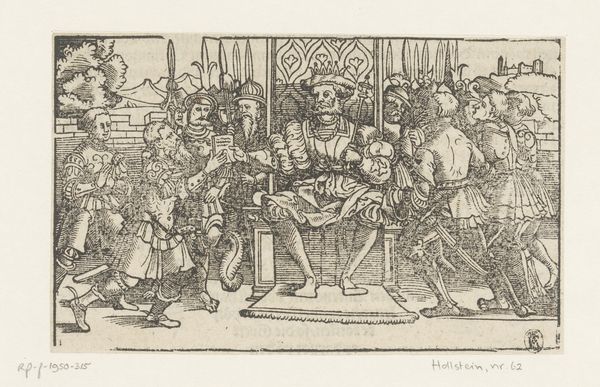
drawing, ink, pen
#
drawing
#
comic strip sketch
#
narrative-art
#
pen drawing
#
mechanical pen drawing
#
pen illustration
#
pen sketch
#
ink line art
#
ink
#
pen-ink sketch
#
pen work
#
pen
#
genre-painting
#
italian-renaissance
#
italy
Copyright: Public domain
Editor: Here we have Bartolomeo Pinelli's "Nuccia accepts Meo Patacca for her husband," created in 1823, using pen and ink. The density of line work is immediately striking! So many characters rendered with a kind of theatrical flair. How do you interpret this particular arrangement of forms and figures? Curator: Let us focus on the interplay of lines and how they create form. Notice how Pinelli uses hatching and cross-hatching to define the figures' clothing and the architectural space. The varying densities suggest volume and shadow, yet everything remains remarkably flat. It eschews traditional perspective. Is this flatness a strength or a weakness in your opinion? Editor: I think the flatness enhances the illustrative quality; it feels very immediate and accessible rather than trying to create a deep illusionistic space. Curator: Precisely. Consider also how Pinelli uses line weight to differentiate between foreground and background. Thicker lines define the central figures, while finer lines suggest depth. Look at the chair - what impact do you think Pinelli achieves with this juxtaposition of density of strokes and variation of strokes to build a form? Editor: The heavy lines in the chair, even though it is further back, contrast a bit. That brings it closer, sort of destabilizing depth and forcing you to reckon with all elements on one plane, doesn't it? So, it calls attention to the foreground figures but then pulls them all onto one stage. Curator: Indeed. Pinelli masterfully manipulates the medium to create a visually engaging and dynamic scene, which also manages a specific narrative moment through very traditional visual techniques. A very intriguing and balanced result. Editor: This analysis has highlighted Pinelli's technique so brilliantly. It is amazing how close attention to detail is transformative for perception!
Comments
No comments
Be the first to comment and join the conversation on the ultimate creative platform.
